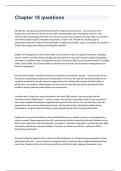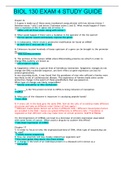The sun and its family
The planetary group is composed of the sun, and everything gravitationally tied to it,
including planets, dwarf planets, 193 known moons, and a significant number of space
rocks, comets, and meteoroids. Compared to the eight planets that orbit the sun, our
planetary group is far larger. In addition, the Kuiper belt, a sparsely populated ring of
frosty bodies that is nearly all smaller than Pluto, is included in the planetary group. It is
located beyond the Neptune ring.
Section 1: Components of the Inner and Outer Solar System
The orbit of spacecraft around a central star is called a solar system. The planets
Mercury, Venus, Earth, Mars, Jupiter, Saturn, Uranus, and Neptune make up our solar
system. There are also dwarf planets like Pluto, dozens of moons, and millions of
asteroids, meteors, and comets. Mercury, Venus, Earth, and Mars are the first four
planets in the solar system and are those that are nearest to the sun. The Terrestrial
Planets is another name for them. The gravitational pull of the sun keeps these small,
dense planets in orbit. They are comprised of rock and iron and have a sparse number of
moons. Mercury is the planet that is nearest to the sun.
Mercury: Mercury, which was formed around 4.5 billion years ago, has a radius of
2439.7 km and is the closest planet to the sun, being only 36 million miles away.
However, Mercury has the second-hottest surface, with temperatures of 430 °C during
the day and -180 °C at night due to the lack of an atmosphere to trap heat. Compared to
the earth's moon, it is only marginally larger. There is an extremely slim chance that any
life might endure on this planet given its stony and cratered surface. Mercury travels
between 2.9 AU to 4.3 AU from the Sun due to its orbit's irregular, more egg-shaped form
than ideal sphericity. Every 59 days on Earth, it makes one full rotation around its axis.
The morning sun is thought to rise briefly, set, and rise again on some portions of the
planet's surface in the morning when it is closest to the Sun. This planet does not
experience sunrises or sunsets like most other worlds do. After sunset, this occurs in
reverse for other areas. Thus, on Earth, a full day to night cycle lasts for 176 days. The
planet is upright and does not undergo seasons like many other planets because of its
small (2 degree) axis.
Mercury is composed of a solid inner core, a molten outer core, a rocky mantle, and a
solid crust. The exposed planetary core, which makes up 85% of Mercury's core, is
located in the planet's centre. Cool lava that has solidified into a crust covers Mercury's
surface. The smallest terrestrial planet is Mercury, which has a radius of 1,516 miles, a
surface area of 74.8 million km², and a mass of 3.301 x 10 23 kg. Due to the planet's
rocky, dusty composition and separation from the Jovian planet's gas giants, it is thought
to be a terrestrial planet. Theoretically, Mercury used to be close to mars, where life was
forming, and 170 million kilometres from the sun. Mercury also struck an embryonic
planet, causing the crust and mantle to scatter, which later formed Venus.
Mercury has an exosphere (instead of an atmosphere), composed of : • oxygen, •
sodium, • helium, • hydrogen • potassium.
Venus: Venus, which also formed 4.5 billion years ago, is located 108.208.930
kilometres from the sun, making it the second-closest planet to the star. Due to its thick
atmosphere, which traps all the heat inside the planet and is made up of 96.5% carbon
dioxide, Venus is the hottest planet in the solar system, making it hotter than mercury.
Its surface temperature is 457 degrees during the day and night. An automobile can be
,Unit 16 assignment A
crushed by the atmosphere because of its 89 earth atmosphere pressure. Venus
demonstrates that it cannot support any known kind of life.
The temperatures on the surface rise to a virulent 880 degrees. The main components of
the atmosphere on Venus are greenhouse emissions and clouds of sulphuric acid
droplets. Venus has a high surface temperature of 470 degrees Celsius, and the
atmosphere includes multiple layers with distinctly varied temperatures. Venus has a
diameter of 12,104 kilometres and a mass of 4.867 x 1024 kg. No moons orbit Venus.
Venus is without rings. Venus rotates from east to west in a motion known as "backwards
rotation." This planet rotates once every 243 days on Earth. Venus completes one
complete cycle around the sun in 225 days on Earth. Venus doesn't experience
discernible seasons due to its three-degree axial tilt. However, clouds move more slowly
the higher up they are. According to scientists, the surface clouds only move a few miles
per hour. Moreover , Venus's mantle is made of hot rock that is slowly churning due to
the planet's intense heat. The surface of Venus may be a thin crust of rock that bulges
and slides as its mantle shifts, forming volcanoes during the process. Venus has an iron
core that is 3,200 kilometres in radius.
Venus has a cloud cover that reflects and scatters sunlight, resulting in a bright white
surface. Venus is covered in mountains, valleys, and countless volcanoes. The highest
mountain, Maxwell Montes, is 20000 feet high and resembles Mount Everest in height.
The environment is highly dusty because of the temperature and the scarcity of water.
Ishtar terra, which is the size of Australia, is one of the two highland regions on Venus.
and Aphrodite Terra, a region in the south that spans the equator for 10,000 kilometres.
The planet is covered in craters formed by small meteoroids burning up in the thick
atmosphere, none of which are smaller than 0.9 miles in diameter. All these landforms
bear the names of significant female figures, both fictional and real; for example, a deep
canyon is called "Diana, goddess of the wounded." The high temperatures and intense
pressure on Venus made it impossible for humans to thrive. The spacecraft launched to
Venus didn't last very long since the high temperatures damaged the electronics, making
it impossible for scientists to study the surface up close.
Earth: Earth is the third planet. As it provides the "Just right" circumstances for life to
survive, scientists refer to the Earth's orbital position as "The Goldilocks." With a surface
temperature of 20 degrees, it is the only planet known to host life, and life can continue
to grow and endure there. According to scientists, water didn't exist on planets when
they were first created by the gravitational pull of rock; it only did so after comets that
were full of liquid impacted the earth. With a radius of 6371 kilometres, Earth is the
largest planet on Earth and the fifth largest planet overall. Since it is exactly 1 AU from
the Sun, it takes the light around eight minutes to reach Earth. One orbit of the Sun by
Earth lasts 365.25 days. To maintain the accuracy of our calendars, scientists add an
extra day every four years; this is known as a leap year. The angle of rotation of our
planet's axis is 23.4 degrees. Seasons on Earth are brought about by this tilt because
summer occurs when the northern hemisphere is slanted towards the sun throughout
rotation. On the other hand, winter results from less solar heat when the southern
hemisphere is facing the Sun. The roles are switched around after six months. The inner
core, outer core, mantle, and crust are the planet's four layers.
The inner core Solid sphere made from iron and nickel metals,
About 1221 kilometres radius, Temperature is 5400 degrees
The outer core 2300 kilometres in radius, Made from iron and nickel fluids.
The mantle The thickest layer, Hot mixture of molten rock, 2900 kilometres
, Unit 16 assignment A
thick, “Caramel” consistency
The crust 30 kilometres thick, At the bottom of the ocean, it is only 5
kilometres thick
The earth’s 78% nitrogen, 21% oxygen, 1% other such as Carbon Dioxide,
atmosphere Argon and neon.
The planet is thought to have formed some 4.5 billion years ago. It would have
developed into a planet as a result of gravity drawing together spinning gas and
dust. The surface's volcanoes, mountains, and valleys are substantially similar to
those of its neighbours. 97% of the water on Earth is found in the ocean, which
also covers 70% of the planet's surface.
The earth's atmosphere is crucial because it influences both the long-term
climate and the short-term weather, protects us from the sun's harmful radiation,
and disintegrates meteoroids that enter the atmosphere.
The magnetic field is created by the rotation of the Earth and the molten nickel-
iron core, and the solar wind bends it into the shape of a teardrop in space.
Charged solar wind particles smash with air molecules above the magnetic poles
when they are caught in the magnetic field. The northern/southern lights are
then produced by these molecules, which glow. Compass needles are utilised
because the magnetic poles make the needles point northward no matter which
way you are facing. According to estimates, the magnetic polarity changes on
average every 400,000 years, flipping the magnetic field's direction. According
to scientists, this has no negative effects on life on Earth and won't occur for
roughly 1000 years. When it occurs, the compass needles will initially point in a
variety of directions until the change is fully implemented, at which point they
will all point south rather than north for a few centuries. The only other planet
having a moon is Earth. The brightest object in the night sky is our moon. It is in
charge of reducing the planet's wobble, which has reduced climate variability for
thousands of years. The Earth and a big rock collided billions of years ago,
creating the moon. A significant chunk of the earth's interior was moved by this
collision. The moon that exists today was created when these fragments
gathered. With its harsh climate, diverse mixture of atmospheric chemicals, and
abundance of water, Earth is the only planet with the best chance of supporting
life.
Mars: Mars, which is the final inner planet and is located roughly 208,708,401 miles
from the sun, is commonly referred to as the "red planet" simply because of the colour of
its surface. Apart from Earth, no planet has been the subject of as much research as
Mars. Six spacecraft from NASA are in orbit around Mars, and two robotic spacecraft are
working on the Martian surface. Even more recent plans call for sending a new rover very
soon. Mars has a radius of 3390 km, which is about half that of the Earth. The whole orbit
of the sun takes 687 Earth days and 23.9 Earth hours to complete. Mars' axis of rotation
is slanted at a 25-degree angle, which is quite similar to Earth's. Mars has highly distinct
seasons as a result, but since it is further away from the sun than earth, it takes more
time for the cycle to complete. Because of the egg-shaped orbit around the Sun, some
seasons are longer than others. Though we don't know the actual measurement, we can










